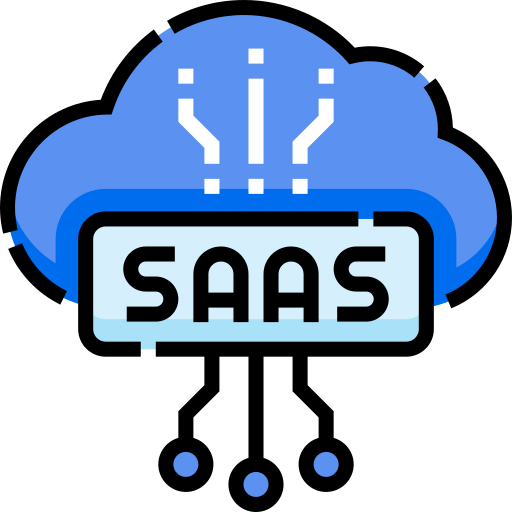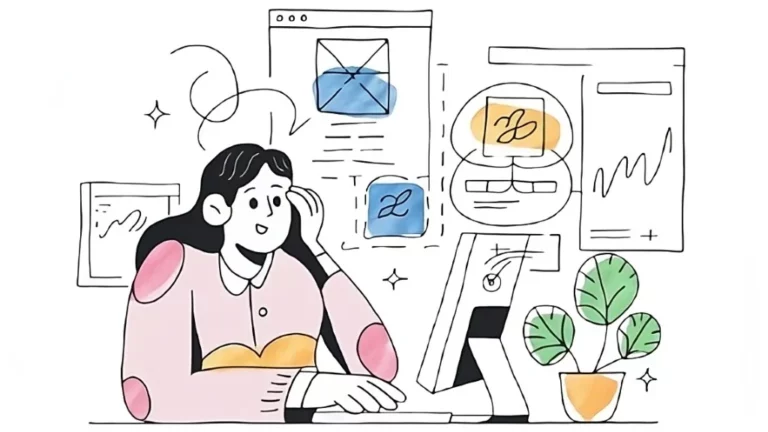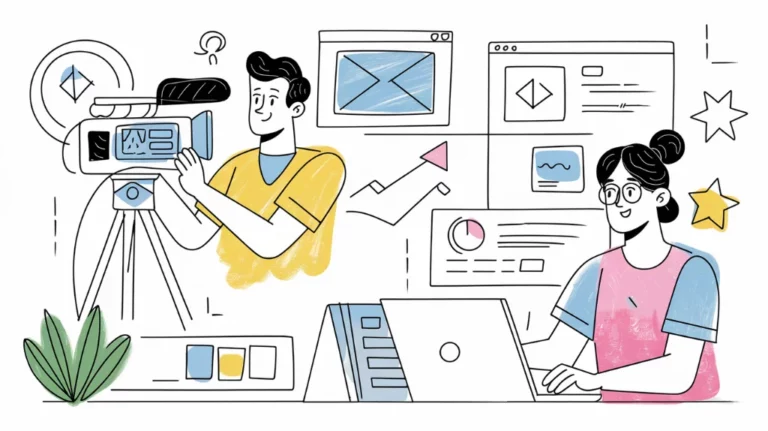Every single interaction a customer has with your SaaS product, from the moment they land on your website to the day they (hopefully) become a long-term advocate, plays a pivotal role in shaping their overall perception of your brand. Consider this:
Salesforce reports that a staggering 80% of customers view the experience a company provides as equally important as the products and services themselves.
This statistic highlights the critical need for maintaining consistency and quality across every touchpoint. Think of it this way – you wouldn't serve a gourmet meal on a dirty plate, would you?
For solo entrepreneurs, especially those navigating the challenging SaaS landscape, the need for meticulous attention to every interaction is even more pronounced. You are likely juggling multiple responsibilities – from coding and marketing to providing customer support. This makes it vital to streamline, refine, and perfect each interaction point. Doing so will not only help to cultivate trust and foster loyalty, but will also ensure your long-term success in this very competitive market. Remember, you're not just selling software, you're selling an experience.
How Does First Impressions Influence SaaS Product Adoption?
That initial impression your potential customer gets is very powerful, often setting the tone for their entire relationship with your brand. As the saying goes, you never get a second chance to make a first impression, and this rings particularly true in the online world. Research from Sweor indicates that:
It takes a mere 0.05 seconds for users to form an opinion about your website.
Yes, you read that right - 0.05 seconds! That's less time than it takes to blink. The moment someone lands on your homepage, they are subconsciously deciding whether your product is worth their time and investment. It's a blink-and-you'll-miss-it moment that could make or break your SaaS.
This underscores the need for a landing page that is not only visually appealing but also highly functional and effective. A cluttered or confusing homepage is a red flag for potential customers. They are likely to bounce off quickly, going straight to your competition. But how can you make this happen?
Actionable Tips:
- Design for Clarity: Opt for simple, intuitive layouts with clear, easy-to-follow navigation. Your website should be a breeze to use, not a puzzle to solve. Use design tools like Webflow or Figma to test and optimize your design. These tools make A/B testing different layouts a simple process, allowing you to determine what truly works for your target audience.
- Highlight Benefits, Not Just Features: Showcase your SaaS product's unique value proposition prominently, ensuring it stands out immediately. Don't just list what your software does but focus on what it achieves for the user. For example, instead of saying "Our software has automated workflows," say "Our software helps you reclaim hours each week by automating your workflows."
- Leverage Social Proof: Build trust quickly by incorporating testimonials, case studies, or even client logos. Real people and real success stories are far more convincing than vague marketing claims. Consider showcasing customer reviews that address specific pain points that your product solves.
How Can Onboarding Define Long-Term Success?
A smooth, well-crafted onboarding process can very much make or break your SaaS company. Think of it as the first real date – if it goes badly, there's not much chance of a second! According to Wyzowl:
A remarkable 86% of users report that they are more likely to remain loyal to a brand that offers a good onboarding experience.
This highlights that the way a user is introduced to your product is a major factor in their future engagement.
The onboarding experience provides an essential opportunity to walk users through your product, highlighting its features and helping them understand its value. This process is not merely a product demonstration. It's about creating a pathway for users to seamlessly integrate your tool into their workflow. You are essentially setting the stage for long-term use and, more importantly, long-term subscription revenue.
Actionable Tips:
- Interactive Tutorials: Use tools like Appcues or WalkMe to guide users step-by-step through your product's features. Interactive guides provide hands-on learning which will lead to better user adoption and quicker time to value.
- Clear Milestones: Break the onboarding into manageable, digestible steps. It is always wise to celebrate small wins to keep users engaged. Think about providing progress bars, visual cues, and clear feedback to make the onboarding process feel rewarding.
- Feedback Loops: Continuously solicit feedback during the onboarding process to identify areas of friction and improve the user journey. Include surveys, or prompts asking for feedback at key stages. This direct feedback is gold and will allow you to quickly address user pain points.
Why Should Customer Support Be Proactive, Not Reactive?
In today’s world of instant gratification, reactive customer support is no longer enough. Businesses need to be proactive. A report by HubSpot indicates that:
93% of customers are more likely to make repeat purchases with companies that provide excellent customer service.
For solo entrepreneurs in the SaaS world, offering proactive support can truly differentiate your product. It sends the signal that you not only care about the product, but also about the customer's success using that product.
Proactive support is not just about addressing issues as they arise but rather about anticipating potential problems and providing solutions before the user experiences them. This might involve preemptive outreach to educate them on new features, providing helpful resources or offering tips to improve their product experience. You are not just being a support person but also a partner.
Actionable Tips:
- Set Up Chatbots: Tools such as Intercom or Zendesk can help manage initial user queries effectively. Bots can handle repetitive tasks, route specific queries to the correct teams and provide quick answers to common questions. The key thing is not to make them a maze. Make it clear when they are reaching a bot or a human.
- Build a Knowledge Base: A comprehensive FAQ or resource hub can empower users to solve many issues themselves. Make sure that this is easily searchable and covers a wide range of topics. Think like the user. What do they need to know to start using the product? What are common questions they may have?
- Use Feedback: Monitor customer support queries and use the feedback for further product improvements. Customer support interactions provide valuable insight into the user experience, as well as specific areas that may be confusing or not intuitive.
How Does Consistency in Messaging Boost Trust?
Consistent messaging is not just about maintaining a consistent brand voice. It’s also about building a sense of reliability and trust among your customers. Forbes has found that:
Consistent branding can potentially increase revenue by up to 23%.
That's a significant jump. For SaaS businesses, which often rely on recurring revenue, consistency in communication becomes even more critical as it can drive that revenue forward.
When your brand is consistently presented across all platforms, from your website to social media, your customers develop a clear sense of who you are and what you represent. Consistency reduces confusion and uncertainty, making it easier for customers to understand your offering. This consistency extends beyond just visual branding; it also includes the tone, messaging, and value proposition you present. If you are consistent, you are predictable, and predictability breeds trust.
Actionable Tips:
- Align Tone Across Channels: Make sure that whether it's social media, email, or in-app messages, your brand voice should be recognizable and consistent across the board. Use tone guidelines to ensure that all communications follow the same style, keeping it in mind all the time.
- Develop a Style Guide: Document all the important elements that define your brand, including its tone, style, and key messaging. This will help you maintain brand integrity, even as your team expands or as you outsource work. Include brand fonts, colours, image style and messaging guidelines.
- Be Transparent: Honest and open communication, especially during service interruptions or delays, goes a long way in building long-term trust. Be upfront and don’t try to hide mistakes. Your customer base will always respect honesty.
What Role Does Data Play in Improving Customer Touchpoints?
Data is the fuel that powers effective decision-making. According to McKinsey:
Businesses that leverage customer analytics are 23 times more likely to acquire customers.
In the SaaS world, understanding user behavior is vital for identifying areas that are working as well as the ones that require improvement. Customer analytics is not just about measuring engagement; it is also about understanding customer motivations.
Data-driven decisions can help you optimize the entire user journey, from your website to your customer support protocols. It also ensures that you aren't just guessing or relying on your gut, but rather basing your choices on tangible and actionable insights. By tracking key metrics, you can identify the areas that are working well and the ones where users may be experiencing friction. This enables you to make targeted improvements, ultimately enhancing the overall customer experience.
Actionable Tips:
- Use Analytics Tools: Leverage analytics platforms such as Google Analytics, Mixpanel, or Hotjar, which can provide invaluable insight into your user behavior patterns. These tools offer real time data, allowing you to quickly identify trends and make immediate changes.
- Segment Your Users: Different users have different needs and use cases. Tailor your communication and product features to cater to specific user segments. Don't make assumptions, rather rely on the data to learn the best ways to connect with each segment.
- A/B Testing: Continuously test variations of your website, emails, and in-app features to optimize for user engagement. A/B testing is a great way to find out which strategies work and which do not.
How Do SaaS Entrepreneurs Benefit from Investing in Customer Experience?
Investing in a seamless, customer-centric experience pays off massively. PWC reports that:
A considerable 73% of consumers consider customer experience an important factor in their purchasing decisions.
This means that for the majority of people, the experience of interacting with your product and company is just as important as the product itself. It is very clear that focusing on the customer experience is a sound investment, not just a nice-to-have.
Positive customer experience leads to long-term loyalty, increased customer referrals, and ultimately higher profitability. The opposite is also true, of course. A poor customer experience can result in lost business, negative reviews and a decreased brand value. In a nutshell, if you make your customers happy, they will in turn help you to succeed.
Benefits:
- Reduced Churn: Happy customers are significantly less likely to cancel their subscriptions. They will stick around longer and thus continue to contribute to your business. This will impact directly on your revenue.
- Increased Referrals: Satisfied customers tend to become your brand advocates. They are far more likely to recommend your product to their friends and colleagues. Word-of-mouth marketing is one of the most cost-effective ways to grow your business.
- Higher Revenue: Retained customers contribute more to your bottom line over time. They are also more likely to upgrade to higher plans, which will make your business more profitable.
Actionable Steps:
- Track Churn Metrics: Use tools like Baremetrics or ProfitWell to monitor churn rates effectively. Keeping an eye on this will enable you to spot trends and make changes before it impacts your business.
- Reward Loyalty: Offer discounts or exclusive features to reward long-term customers. This will not only make them feel valued but also incentivize them to remain subscribed.
- Listen Actively: Conduct regular surveys or Net Promoter Score (NPS) assessments to identify areas for improvement. This will give you invaluable insights into customer perceptions, allowing you to make data-driven adjustments.
Final Thoughts: What’s the Key Takeaway for Solo SaaS Entrepreneurs?
Each and every point of contact a customer has with your brand is an opportunity to reinforce the value of your product and build a loyal customer base. For solo entrepreneurs, this requires purposefulness and strategic use of the tools at your disposal. By focusing on quality and consistency across the entire customer journey, you can ensure that every touchpoint reflects the message and experience you want to convey. This approach will ultimately drive growth and long-term success for your SaaS business.







